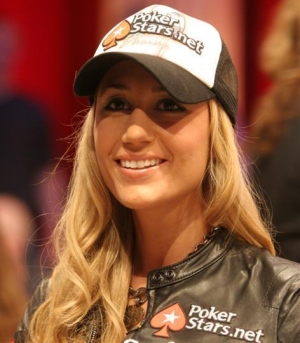|

Join our Newsletter
& get our free guide Starting Hands Revealed
We hate spam too!
We value your privacy and never share your email. All our emails have an opt-out link. Click it, and you will never hear from us again. pokerstars marketing code
in various languages
pokerstars review
in various languages
|
Variance demystifiedVying with variance
But in reality, variance is a simple term, and a comprehensive understanding of the math behind it isn’t required to fathom its importance. Variance is the statistical measure of how your results in poker will be dispersed. Take the following example; Player A holds AA and Player B 99. Both players go all-in pre-flop. Player A is a 4-1 (80%) favourite, which means his hand will win 4 out of 5 times. If this situation occurred 500,000 times, variance is absolutely minimal, and Player A will win very close to 400,000 times. However, over 5 hands, variance is considerably higher, and it is conceivable that Player A loses every hand. Yes you can get your pocket aces cracked five times in a row, this is nothing extraordinary as far as statistics go. Variance explainedThe difference between long term expectation and the results realised in the short term is called variance. For more information as to how variance is calculated, click here. Bill Chen, an expert in the mathematics of poker and associate of PokerStars, explains the concept of variance very succinctly on the rec.gambling.poker newsgroup. This is his quote: ‘When we sit down at a table, every hour we're essentially doing a coin toss for a rack of chips. Now if you're a skilled player you may have an overlay of half a stack (assuming 100 chips in a rack and 20 in a stack). So if you're a skilled $3-6 player, it's like flipping a coin and getting $120 if you win and losing $100 if you lose or if you're a 15-30 player it's $600 if you win, $500 if you lose. Now this is a pretty huge edge when compared to blackjack on a per-hand basis but we shouldn't be too surprised at all if we get on a bad streak and lose $3000. How easy is it to flip tails 6 times a row? It's bound to happen if you flip coins all the time -- now 10 or 15 in a row is a little unlucky but nothing too phenomenal.’ Take heed of the last sentence. In order to maximise the edge, it is necessary to play a high volume of hands, so the effects of variance are limited. Don’t worry too much about the mathematical equations behind calculating variance – all you need to know is what it is, and how to reduce it. There are programs such as PokerTracker and Hold’em Manager which calculate variance for us. Variance kicking in can cause us to run above expected value (an upswing) or below expected value (a downswing). For instance, Daniel Negreanu was hit by the proverbial variance stick in his first heads-up, 5,000 hand showdown with Isildur1. In all-in pots, Negreanu ran a significant $40,000 under expected value. A solid, winning player will look to iron out variance in order to achieve a consistent win-rate. Variance can be reduced in several ways. The obvious way, which is easier said than done, is consistently making correct decisions (knowing when you are favourite, knowing the correct pot odds etc). The next is to play a high volume of hands, which can be done by multi-tabling. It is widely accepted that after 100,000 to 200,000 hands, the effect of chance is all but gone, especially at low and mid stakes. Finally, we can select games which are less volatile. Pot Limit Omaha contains a lot more variance, as players are rarely more than 60% favourites pre-flop with any random holding. Tournaments which adopt faster blind structures contain a lot more variance, because we are forced into committing our chips in less favourable situations. The effects of variance can be brutal on a player insufficiently bankrolled for a limit, and can cause them to go broke. To avoid the effects of variance, a player is recommended to have 25 buy-ins of any Hold’em limit, and 40-50 buy-ins of any Omaha limit. Understanding variance can help a player with the psychological elements of poker, preventing them from tilt after a bad beat. Next time your pocket kings are cracked by queens, just tut ‘variance’, and be happy that you made the correct decision. You will be rewarded in the long run. If you sign up at pokerstars, you can observe Vanessa Rousso playing poker there. Her username is 'LadyMaverick'. Or you can play her, if you dare.

|










